How to Canoe Camp in Voyageurs National Park
To truly experience Voyageurs National Park, one must be on the water.
For me to truly experience a National Park, I must go camping.
In Voyageurs, the only campsites are “boat in” sites. If you’re like me and want to canoe to your campsite rather than take a motorized boat, you’re in the right place.
Figuring out how to organize a canoe trip was difficult; there is a lack of internet information on Voyageurs right now. Luckily, I’m here to walk you through how to canoe camp in Voyageurs National Park.
With this guide, planning your trip will be easy.
If you’re camping in Voyageurs but not canoe camping, I have that guide too.
My husband and I visited Voyageurs in mid-September. We spent 3 days canoeing and camping with our dog, Zoe.
If I had to pick one word to describe Voyageurs, I would say peaceful. We had our own little islands, surrounded by calm water, serene sunsets and sunrises, and the quiet lap of water against the shore. It was easy to get lost in the night sky because the stars shined so bright and the streak of the Milky Way was visible. And seeing a bald eagle floating in the sky while paddling our canoe left me with a sense of awe. Voyageurs is amazing.
Canoe Camping in Voyageurs National Park at a glance
About Voyageurs National Park
Voyageurs became a National Park in 1975, and it is the only NP in Minnesota. It is located near International Falls, MN and is so far north it’s almost in Canada. It is one of the most unique National Parks because exploration of it must be done by boat.
Voyageurs NP is open all year and admission is free. If you visit in Spring, Summer, or Fall you can rent a canoe, kayak, house boat, or fishing boat. If you visit in the Winter, you’ll be snowshoeing and snowmobiling.
There are 3 visitors centers: Ash River, Kabetogama Lake, and Rainy Lake.
And there are 4 major lakes: Rainy Lake, Kabetogama Lake, Namakan Lake, and Sand Point Lake.
I read that Voyageurs is amazing for fishing, but I never go fishing… you’ll have to find a different blog to read about that because you definitely don’t want fishing advice from me.
How to Canoe Camp in Voyageurs National Park
Disclaimer: I am not an expert at canoeing. I had only done a handful of canoe trips prior to Voyageurs and none had involved camping. Planning a trip to Voyageurs was overwhelming at times because I felt so out of my comfort zone. I didn’t know how to find campsites or how to rent a canoe or how much wind is too much wind to canoe in. This makes me the perfect person to explain all this to you, though. I was a total beginner, and I managed to plan an incredible trip to this park.
- Step #1 – Figure out how far you can paddle a canoe
- Step #2 – Know what nights you need to book
- Step #3 – Find and book your campsites
- Step #4 – Print your permits
- Step #5 – Book your canoe
- Step #6 – Pack for your canoe camp in Voyageurs National Park
- Step #7 – Download a GPS Topo Map App
- Step #8 – Get to Voyageurs
- Step #9 – Know the camping rules, regulations, and info
- Step #10 – Determine if it’s safe to canoe
- Step #11 – Enjoy your trip!
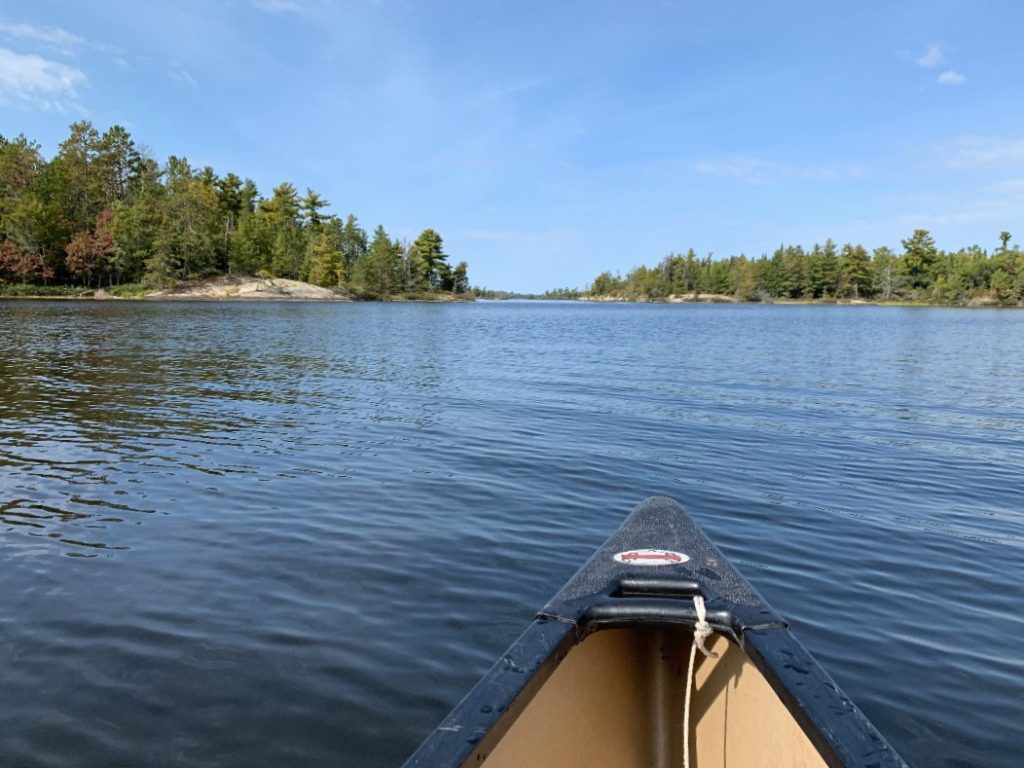
Step #1 – Figure out how far you can paddle a canoe
There are campsites in Voyageurs that are 1.5 miles from the nearest visitors center and there are others that require you to canoe 15 miles.
I did some googling and found that, on average, it takes around 20-30 minutes to canoe 1 mile. To canoe 10 miles, it should take around 3.5 hours of constant paddling.
Obviously, different elements can change how quickly you can paddle 1 mile. Wind, water current, number of paddlers, and the strength of those paddlers.
You should also factor in how much time you have to get to your campsite. We drove 5 hours from Minneapolis and didn’t start paddling until 4pm. Our first campsite was only 2.2 miles from the visitors center so we could arrive before dark. If you have alllll day to paddle, maybe venture out a little farther.
This website talks all about canoeing and the different factors that affect how long it could take.
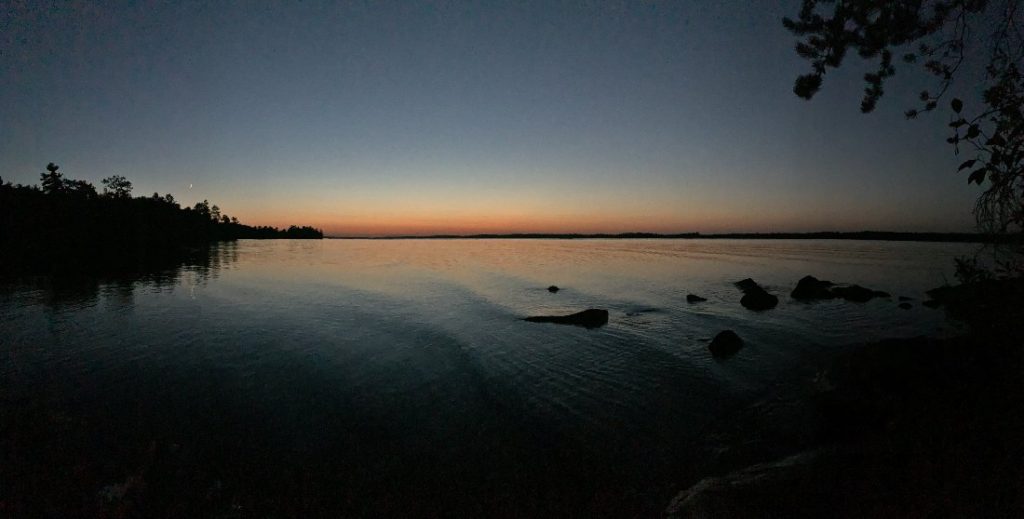
Step #2 – Know what nights you need to book
Figure out your itinerary. Being flexible is helpful if you’re booking closer to when your trip is, just in case a lot of campsites are booked.
When should you go? Voyageurs is mostly a spring/fall/summertime destination; it can get very cold in the winter. If you visit mid-summer, you may have to battle mosquitoes and flies, but you’ll have warmer weather. If you visit spring/fall, you’ll be bug-free but cooler. We went mid-September, and it was perfect. There were plenty of campsites available, it wasn’t too chilly, it was perfect campfire weather, the leaves were juuuust beginning to change, and we saw almost zero bugs. I never even lit our citronella candle.
Also, think about whether you want to stay at the same campsite for your whole trip or if you want to canoe to different campsites each night.
We found it exciting to paddle to a new campsite because it A. gave us something to do during the day, B. let us see more of the waterways, and C. allowed us to experience a new island campsite.
If you want to just relax and read a book in your hammock all day, stay put in the same campsite.
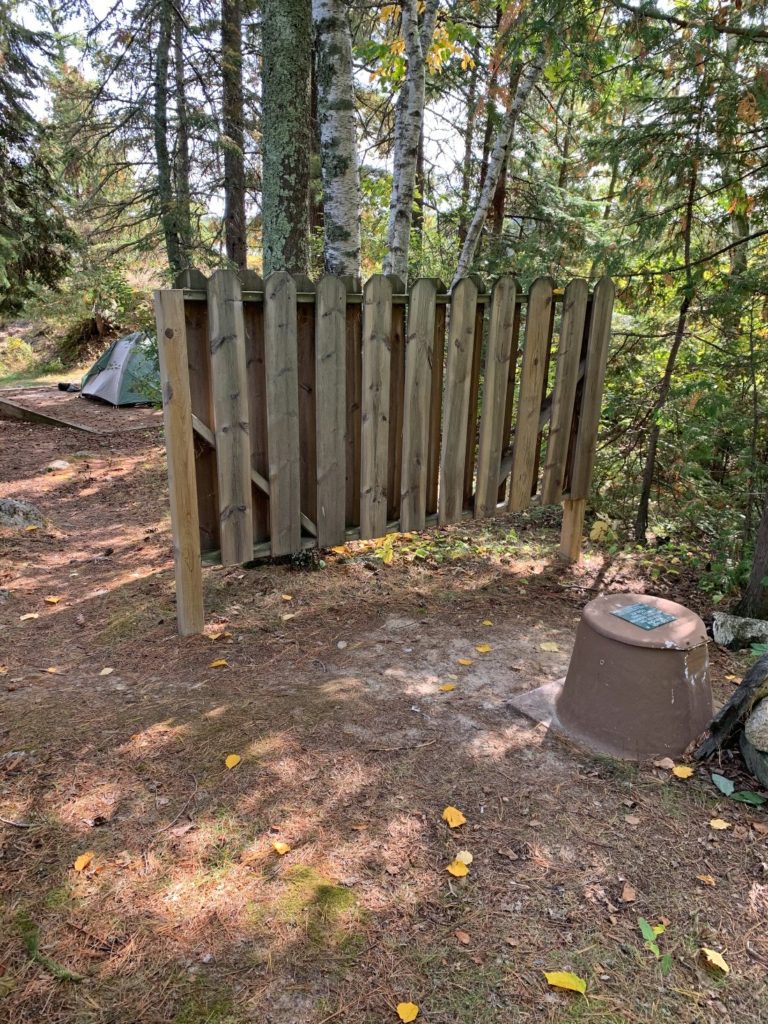
Step #3 – Find and book your campsites
There are 282 campsites in Voyageurs National Park and all of them require you to arrive by water (seriously, how cool). Every campsite has a pit toilet, picnic table, fire pit, bear lockers, and dirt tent areas. Some are large campsites with multiple tent spots and some are small campsites with just 2 tent spots.
You can camp in backcountry sites or frontcountry sites. I will be talking about frontcountry camping, but if you’re into backpacking definitely look into the backpacking sites to really get into the wilderness.
Here is a campsite map if you want to see them all at once.
Campsites must be booked ahead of time on recreation.gov.
Search Voyageurs National Park, enter your dates, and click Voyageurs National Park Camping Permits. On the right, click Build Itinerary and then enter the number of guests.
This will bring up all the campsites and dates. You’re looking for A = Available.
As I discussed before, there are multiple lakes and multiple visitors centers in the park. The best place to get canoe rentals is from Voyageurs Outfitters (we’ll talk about canoe rentals later). If you are renting from Voyageurs Outfitters, the best place to get campsites is on Rainy Lake, because this drop off spot is the closest to the Outfitters. If you have your own canoe, disregard this and book at any lake.
Click the Group tab to organize the sites so that you can scroll and easily see all the Rainy Lake campsites. Click each name of the campsites on the left, and it will show more info on the campsites. It will pull up the max number of people, what each site offers, a small photo, and, most importantly, how far it is from the nearest visitors center.
Picking your sites
Don’t stress too much about which ones have the best views – I honestly can’t imagine there’s a bad campsite in the park. Use the map on the right side of the recreation.gov page to see if the campsite is near other campsites, on its own island, etc. We stayed at Channel View (R100) and Lyle Mine Island (R93). I recommend both of them.
Scroll through the available campsites and pick the ones you want. When you click the A, it will select that as part of your trip build. You can click extra days on that same campsite or click the nights you want for other campsites.
Click Book Now once you have made your choices.
It is $20-28 per night + $10 reservation fee during the regular season. You will need a recreation.gov account if you don’t already have one.
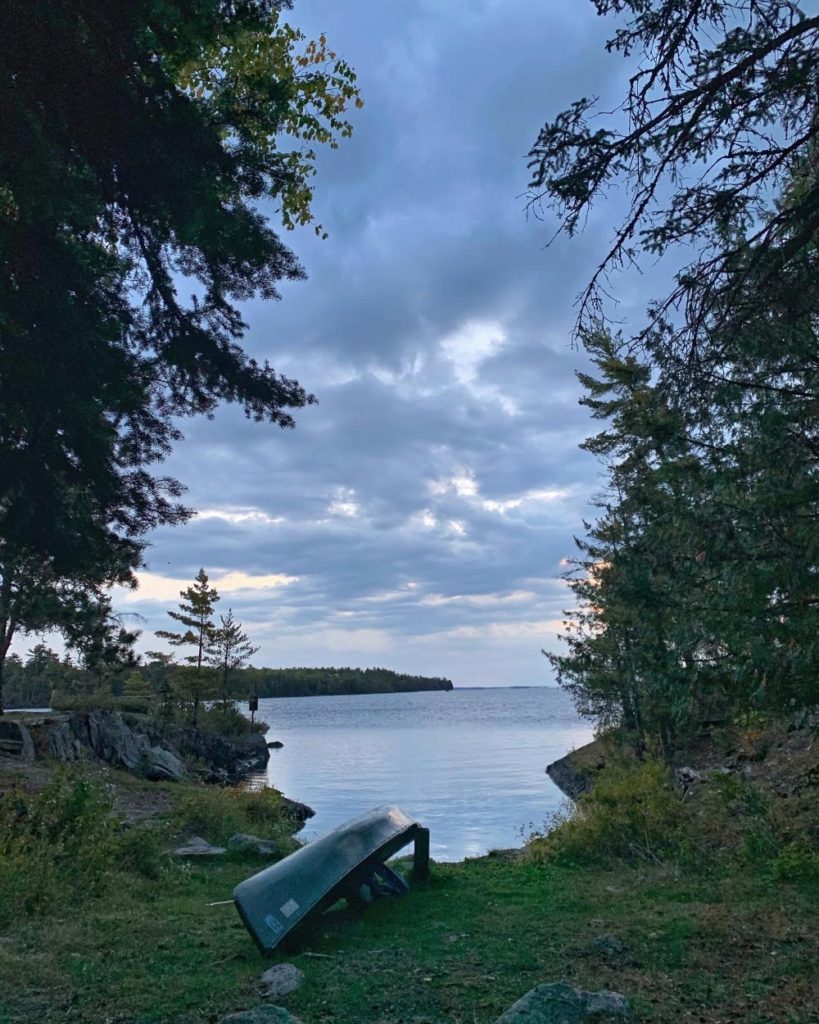
Step #4 – Print your permits
5 days before your trip through the day of your trip, log in to your recreation.gov account, open your trip details, and print the permits for each campsite. Take the printed permits with you on the trip; there will be a little dry box on the bear locker to place your permits.
You don’t have to go to a visitors center when you arrive if you’ve printed your permits ahead of time. You can just start paddling.
Step #5 – Book your canoe
Voyageurs Outfitters is the best spot to book canoes. I looked into other rental spots/lodges and wasn’t able to book a canoe elsewhere. Call 218-244-6506 to book your canoe or *new* you can book on their website. They also rent out camping gear if you need that, and they do guided tours. Booking with them was easy and straight-forward.
I mentioned above that it’s best to book your campsite on Rainy Lake because of its proximity to Voyageurs Outfitters. If you book on Kabetogama Lake, it is a 90 minute drive for them to drop off your canoe at the visitors centers there, so it’s pretty expensive ($150). If you have them drop your canoe at Rainy Lake, it’s only a $40 drop off fee. If you can pick up from their location, you can save yourself the drop-off fee.
It is $50 per day for a 2 person canoe and life jackets. They leave the canoe for you near the boat dock, and it’s easy to pull it into the water.
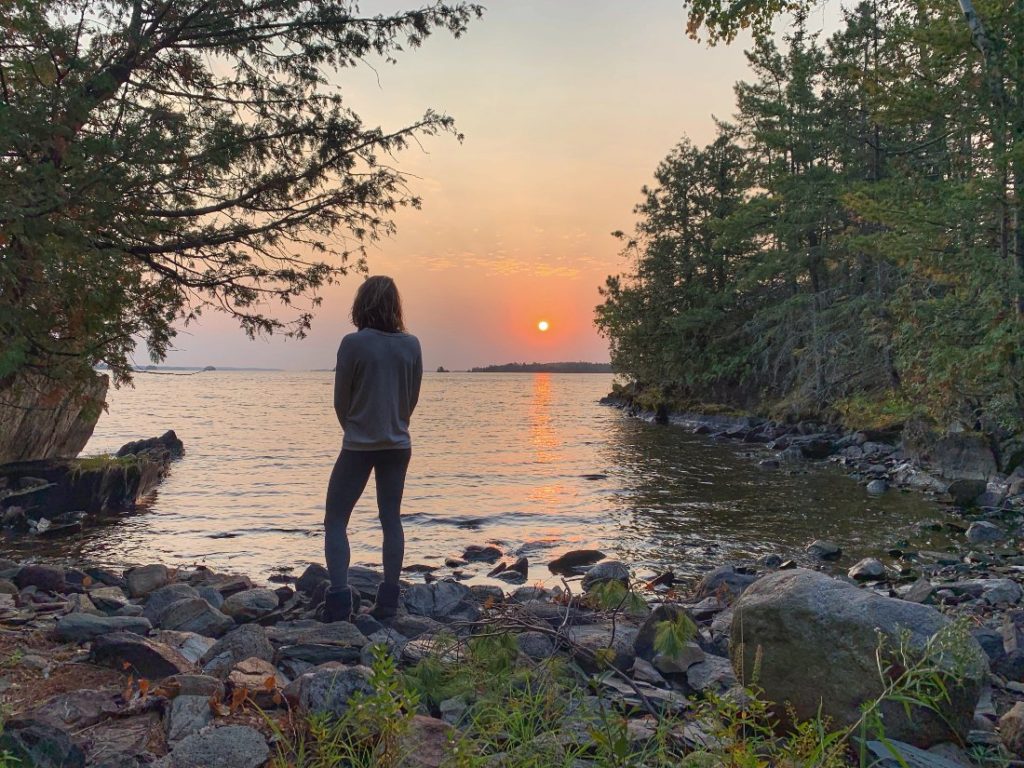
Step #6 – Pack for your canoe camp in Voyageurs National Park
Once you canoe to your campsite, you can’t just pick up forgotten supplies, so please remember everything. It’s not car camping – you can’t bring everything you want. But it’s also not backpacking – you can bring extra items that can fit in the canoe. For us, that was our dog’s bed, boxed wine, and extra layers/blankets for if it got really cold.
I have a backpackers packing list that I always reference when packing for camping trips.
Recommendations: Pick up and pack firewood. Bring a swimsuit, extra layers, bug spray (in the summer), fire starters, and extra water or a water filter. Triple check everything before you go. Don’t forget your matches!
If you’re worried about things getting wet while canoeing, you could put your gear in rubbermaid bins or garbage bags. We put our gear more toward the ends of the canoe, and nothing got super wet.
Step #7 – Download a GPS Topo Map App
If you’re going to canoe camp in Voyageurs National Park, it is best to have a reliable map.
Go to the NPS website from your phone and download the GPX file onto it. I had previously downloaded the Topo Maps+ app, so the Voyageurs GPS map uploaded into the app. Download the section of the map and add the campsites that you’ve booked and the visitors center that you’ll be paddling from.
When you start your canoe trip, you can periodically open your app, click the little GPS thing in the upper righthand corner, and see where you are in relation to your campsites, visitors center, etc. even if you’re in airplane mode/have no service. This was SUPER helpful to us.
If you are excellent at using a compass and maps, you also have that option. You can order the National Geographic Map.
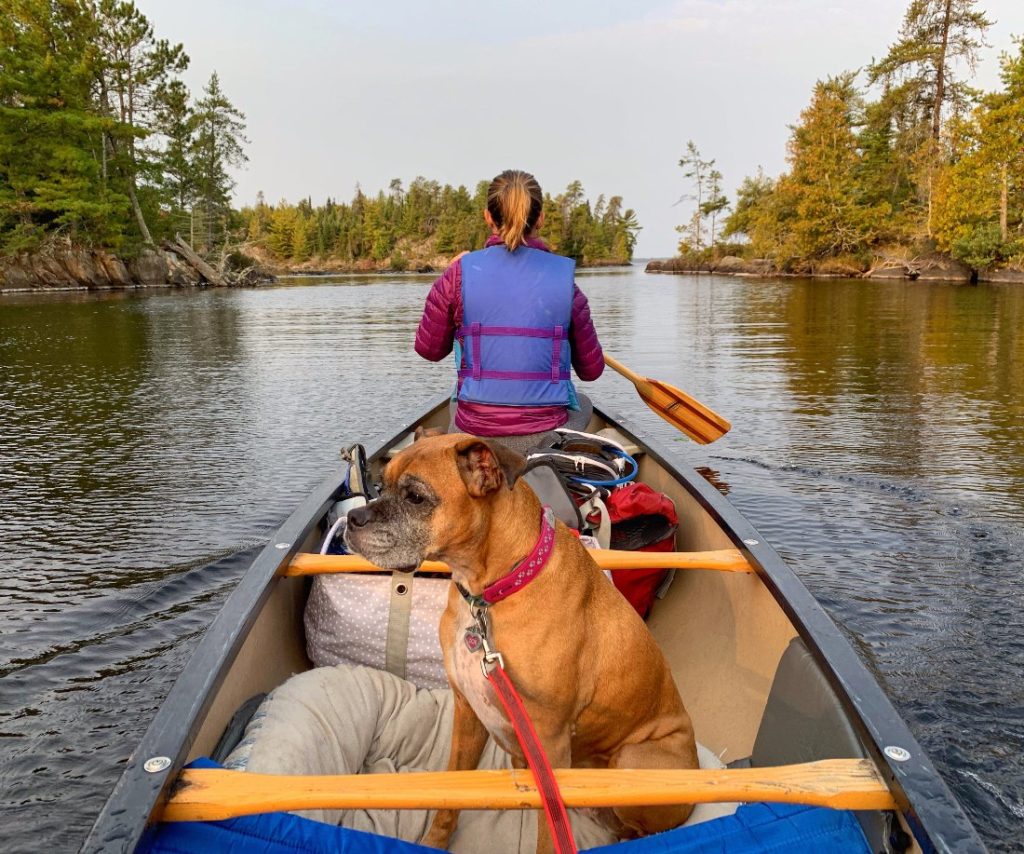
Step #8 – Get to Voyageurs
Visitors Centers in this park can be over an hour from one another. Don’t just type Voyageurs NP into your GPS; make sure you’re heading to the right place.
Voyageurs is about 2 hours from Duluth, 5 hours from Minneapolis/St. Paul on I-35 and Highway 5, and 4 hours from Winnipeg, Manitoba, Canada.
You can park your car overnight at the visitors centers/boat launches.
Step #9 – Know the camping rules, regulations, and info
Protect the wilderness. Don’t destroy anything, and don’t take anything from nature with you.
Clean up after yourself. Don’t leave ANY trash behind. Follow the motto “Leave it better than you found it.” I like to pick up pieces of trash left by previous campers and take them out with our garbage.
Pets are only allowed in frontcountry campsites, visitors centers, and the Rainy Lake Recreation Trail – leashed. They are not allowed on any other hiking trail or backpacking trail.
Definitely don’t disturb any wildlife. If you see an animal, give it space. And don’t feed the wildlife.
Only have campfires in the provided metal fire pits. Never leave it unattended. Never cut down or use any wood that’s not totally dead. Don’t burn your trash.
No hunting.
Quiet hours are from 10pm-6am.
There are black bears in this park, and they can swim from place to place. Always, always, always keep food and smelly items in the bear lockers (including coolers; they will find a way to open them). Bears don’t want to mess with humans, so don’t give them a reason to… keep your food locked up and keep your distance.
Bring a first aid kit with you.
In case of emergency, dial 911. If you don’t have cell service and have a radio, park managers monitor marine band 16 for emergencies during business hours.
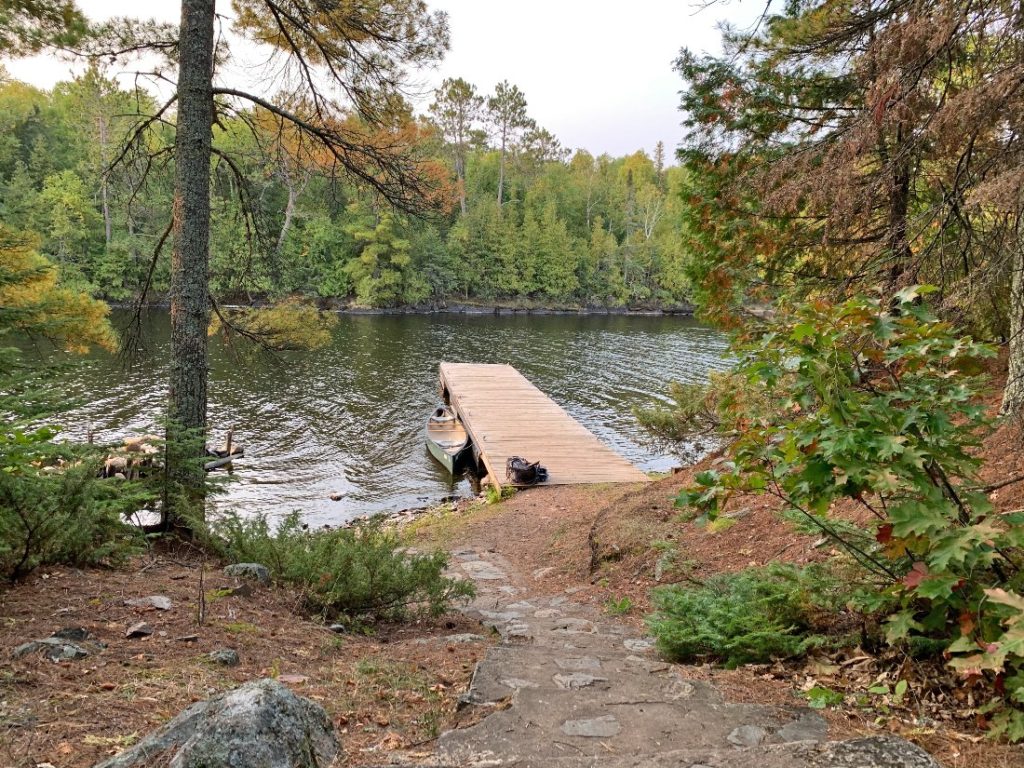
Step #10 – Determine if it’s safe to canoe
I called one lodge to potentially book a canoe. She said they stopped renting out canoes this season to overnighters because there had been so many canoe rescues that had to take place.
Canoeing can be dangerous. Check the weather conditions. Keep an eye on the temperature – are you prepared for cold weather or thunderstorms? And keep an eye on the wind – if you get a strong headwind, are you going to be able to paddle to your campsites or paddle home?
One website says that any wind under 11mph is manageable in a canoe. One person wrote that anything 15mph or above is too much wind to be canoeing.
Use this site – windy.com – to check wind and waves conditions. When in doubt, choose the safer option. If you aren’t strong paddlers and will risk tipping your canoe or not making it to your destination, don’t go.
Keep in mind that if your canoe does flip, you will lose belongings, and in our case, we were worried about our dog. Always wear a life jacket while canoeing.
On Rainy Lake, when we were canoeing near our campsites the wind was blocked by the islands and trees. It was deceivingly fine to be out canoeing. But as we got closer to the visitors center/more on the open water of Rainy Lake, it was SUPER windy and MUCH wavier. Don’t just look out from your campsite and assume that is what the water will look like for the whole time you are paddling.
I said before that I am not a pro at canoeing – read this site about canoe safety prior to embarking on your trip.
Step #11 – Enjoy your trip!
Canoe camping in Voyageurs National Park is one of the best ways you can spend your time. Be on the lookout for bald eagles, moose, and bears. Enjoy the paddling. Spend time staring at the night sky – keep those headlamps off so your eyes can adjust. Soak it in. It is a lovely place and it’s meant to be savored.
Be sure to read my 10 Tips for Visiting Voyageurs National Park before you go!
If you have anything to add to this How to Canoe Camp in Voyageurs National Park Guide, please let me know! And if you make it to the park, drop a comment below and let me know how it was!
Happy Camping!
For more on Minnesota:
- Camping at Split Rock Lighthouse State Park,
- Run Grandma’s Marathon
- Running in the Cold – Lessons from a Minnesota Winter
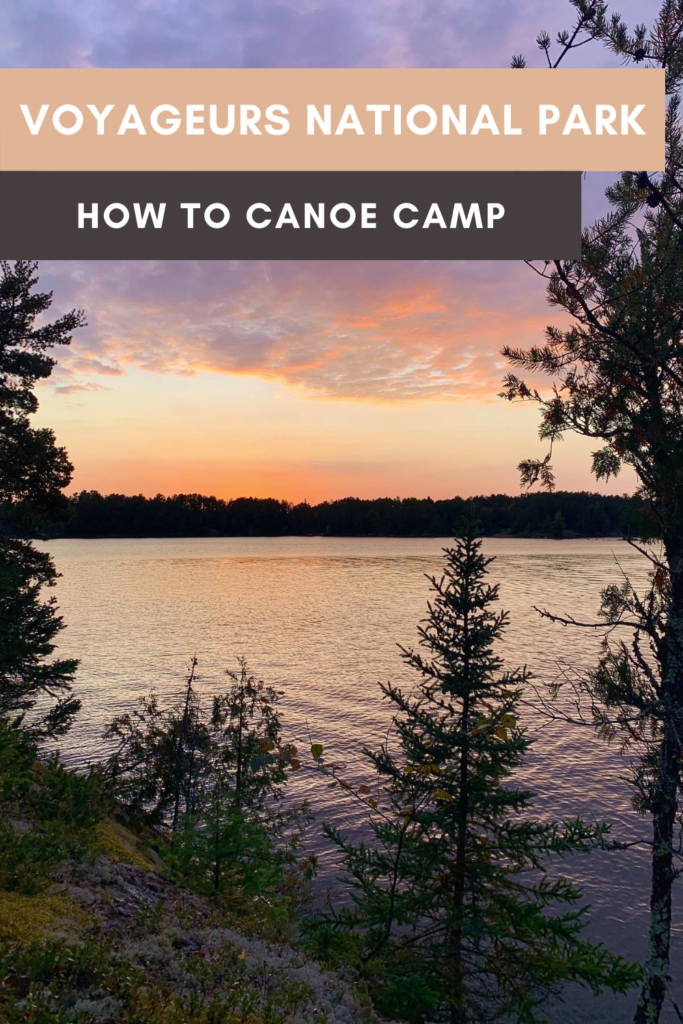
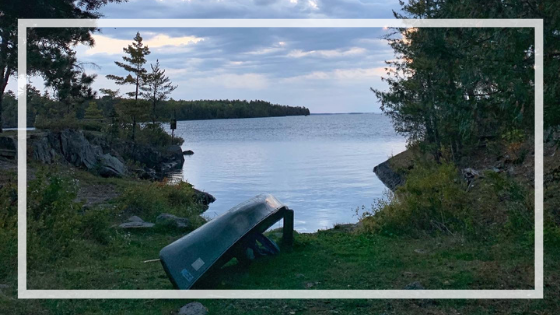
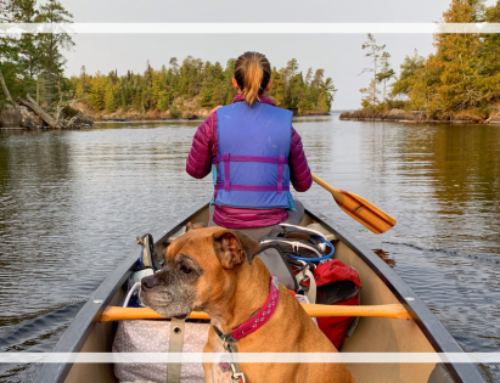
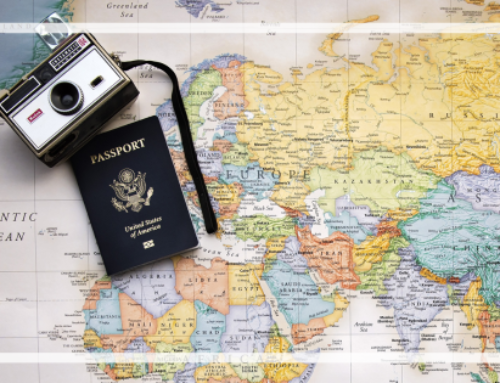
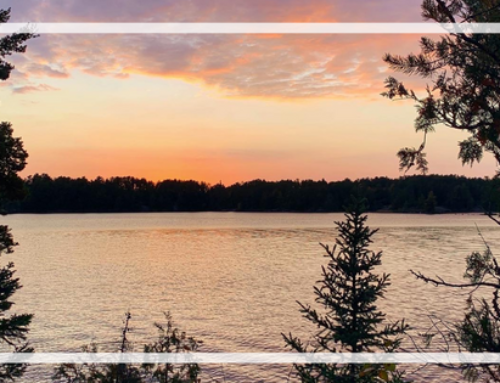
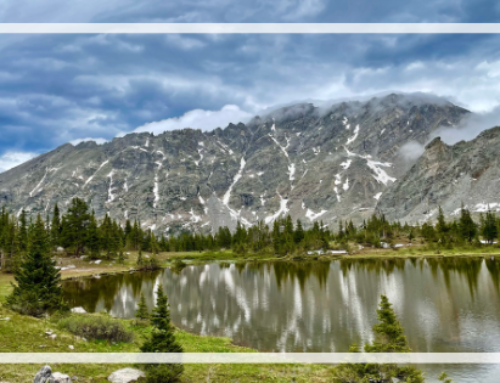
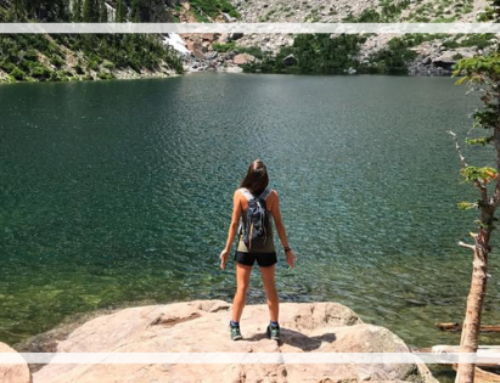
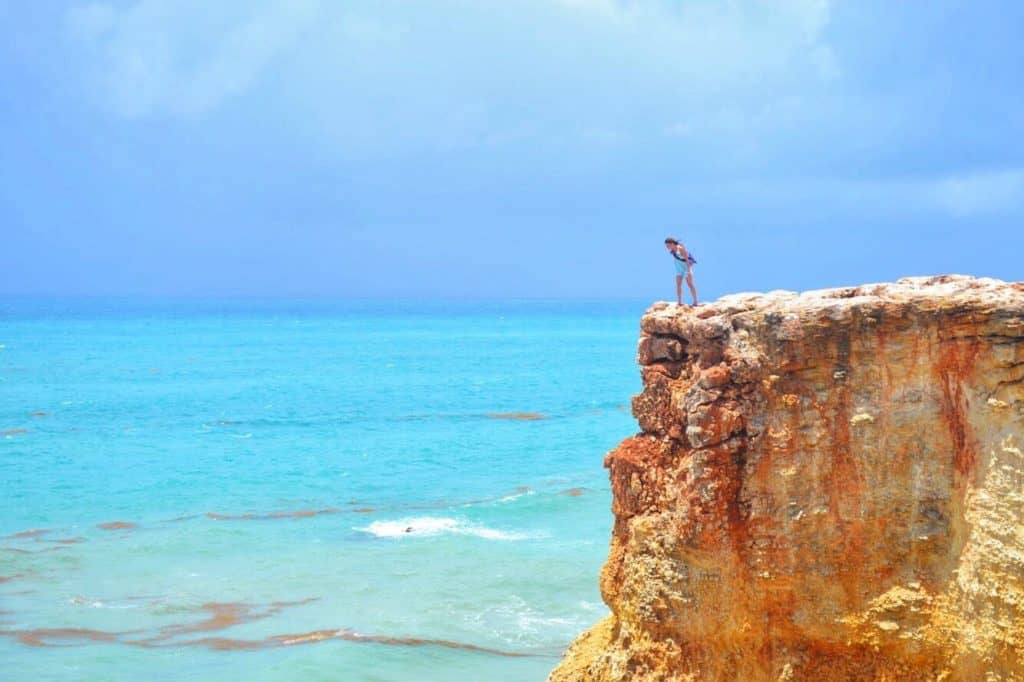
Hello! I’m assuming it’s best to have 2 or more people when canoeing, would that be accurate? I’m envisioning a solo canoe trip being verrrrrryyyy slow but would love your insight. Thanks!
Hi! It would be safest to have 2 or more people, but I feel like that’s the answer whenever this question is posed. And I’m allllll about doing things solo if possible. If you’ve been canoeing before/feel confident in your skills andif you know that the weather will be decent (with a lot of wind, you’d definitely need 2 people paddling), you could do it on your own. Of course wear a life jacket, book a closer campsite so you don’t have to paddle as far, tell people where you’re going, etc. Good luck!! Whether you do this solo or with someone else, I hope you get to camp in this beautiful place!
Thanks so much! That’s helpful, I’ll try to recruit some more ppl. And thanks for the great content! 🙂
Our family backcountry camps. We did some canoeing while in the UP this year, but nothing big. How did you transport and keep your gear dry? Our backpacks are somewhat water resistant.
Hi Dawn! We didn’t do anything special to keep things dry except trying to keep non-waterproof things out of the very bottom of the canoe. Our time there didn’t call for rain. You could definitely put things in large bins or garbage bags if you’re worried about your gear getting wet. Hope you have a great trip!! It’s such a wonderful area.